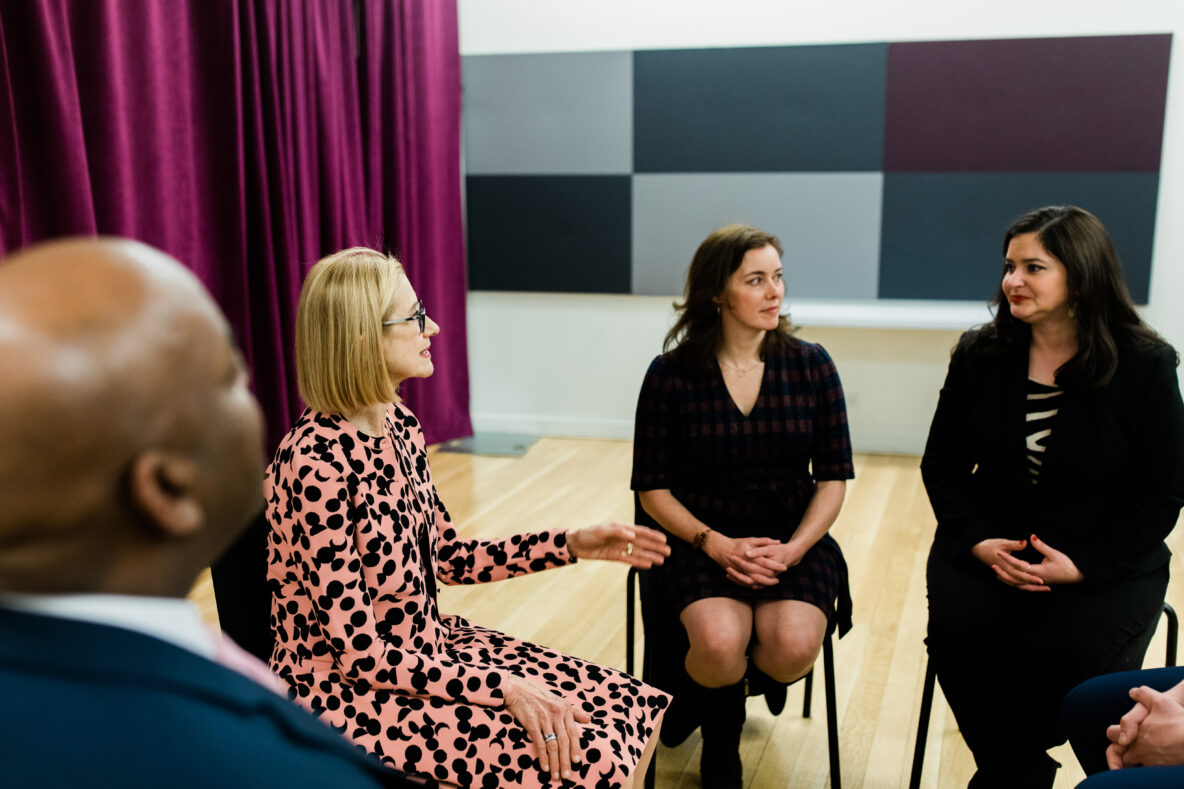My class at the Yale School of Music is off to a great start! Entitled, 21st Century Arts Leadership: Inspiration, Innovation, Collaboration, the class explores how today’s artists can take charge to effect change and make classical music a vital part of our culture. Through innovative collaborative projects, students will explore how to lead change in the arts landscape.
So What Exactly is Leadership?
I posed this question to my class and my students responded with a PollEverywhere Word Cloud:

I was delighted to see that my students understood that leadership does not mean being the boss! Instead, they viewed leadership as a source of positive energy and inspiration to others to take action and make things happen. In addition, a leader is the person who will make a decision, even when things are challenging and ambiguous. Moreover, they commented that you can lead, even without a title, if you are able to take charge and establish trust with others.
- This dovetails with my own experience training and coaching arts leaders at OPERA America, Ensemble Connect, and The League of American Orchestras. Gone are the days when leadership means the autocratic boss on top micromanaging what his staff can do. Instead, leadership is about getting great things done through collaboration .
Think about this quote from John Quincy Adams, the sixth president of the United States:
“If your actions inspire others to dream more, learn more, do more and become more, you are a leader.”
21st Leadership Models
So what models are we focusing on in my class?
I was inspired by the Co-Active Leadership Model. This model posits 5 ways that leaders show up:
- Leader in Front: the leader with a big vision who inspires others
- Leader Behind: the leader who coaches others to leadership
- Leader Beside: the leader who forms authentic partnerships with others
- Leader in the Field: the leader who is open to the unknown
- Leader Within: the leader who acts with integrity in accordance to their values
I converted this model into four styles:
- Leadership from a Vision: having a vision and inspiring others to join in
- Collaborative Leadership: co-leading with partners to lead in each person’s area of expertise
- Servant leadership: coaching others and leading from behind to inspire and empower people to do their best.
- And it starts with leading from within or personal leadership.
Personal Leadership
The start of leadership writ large is the ability to lead yourself.
To do so, here is my model for what 21st Century arts leaders need:
- Positive mindset: The belief in yourself and optimism about the future
- Authentic Leadership: A self-reflection on who you are at your core: your values, passions and strengths.
- Purpose-driven leadership: Knowing your purpose and how you put your talents and experience to work to make the world a better place
- Connection: Once you connect with your purpose, you connect with others who share the same mission and set goals on how you can leverage your collective talents and experience in service of your meaningful goal.
You are then ready to lead others!
I am excited to see how the young leaders in my class will embrace the spirit of purpose-driven connected leadership to work together and lead change in the world of the arts!
And if you are curious to take a deeper dive into purpose-driven, connected leadership, I highly recommend Professor Peter Boyd’s Coursera Class on Connected Leadership!

